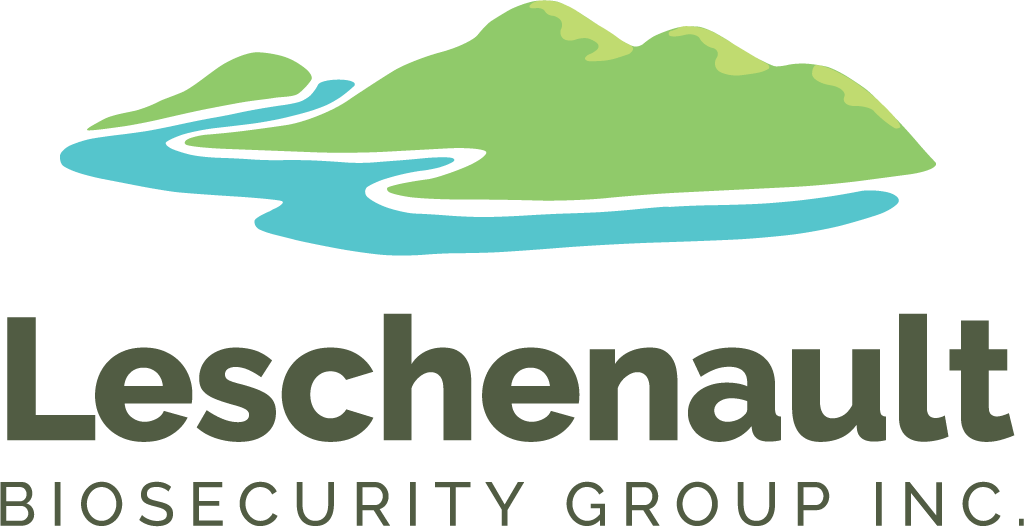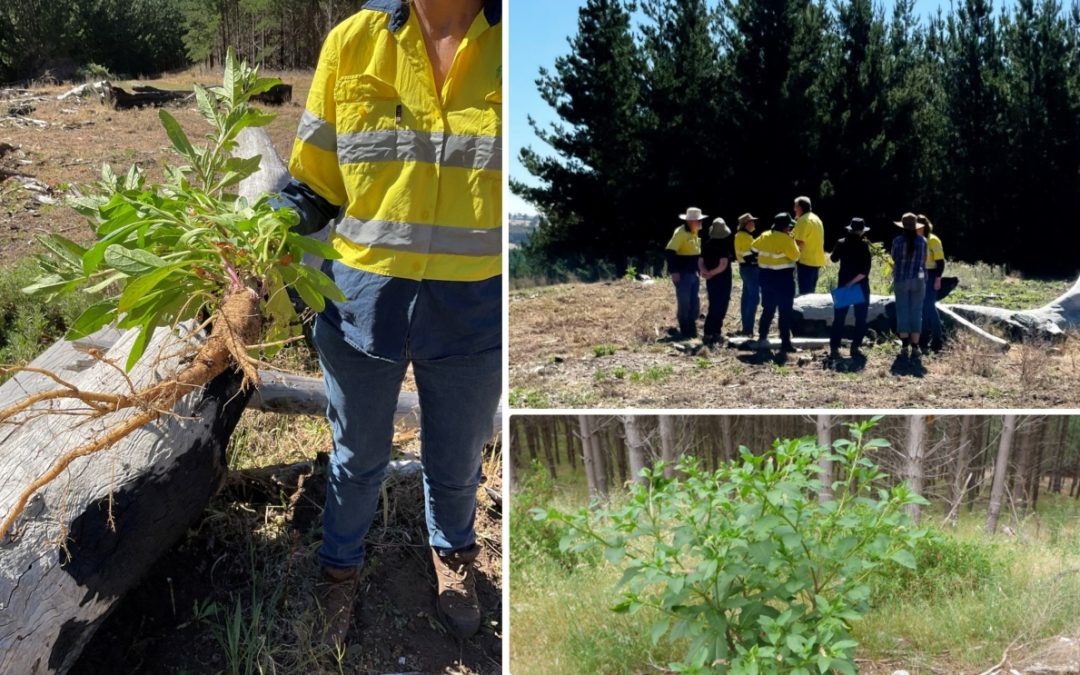Participants in Balingup area Pokeweed field excursion shared “hands-on” knowledge for identifying and controlling this highly toxic and invasive relatively new weed to our area.
LBG provided to support to Blackwood Biosecurity Inc (BBI) who, in collaboration with Forest Products Commission (FPC) and the Department of Primary Industries and Regional Development (DPIRD) co-hosted a field excursion workshop in a Balingup area pine plantation for the purposes of developing and sharing knowledge of “all things Pokeweed” (Phytolacca americana). Neighbouring Leschenault Biosecurity Group also participated in this effort.
This event was funded by the State Natural Resource Management program (NRM) based on the outcome of grant funding garnered by BBI to support people of the Blackwood region to become familiar with the plant and its impact on industry, agriculture and the environment and to encourage broad community reports of suspected plants to DPIRD and Recognised Biosecurity Groups (RBGs).
Not only was the workshop hands on, practical and informative- it was a great networking and professional development opportunity for field staff, as well as community and committee members who participated.
On the hunt…..let’s stop the spread of this invasive and highly toxic weed! DPIRD and FPC have been on the hunt for Pokeweed since it was first identified in WA in 2018, and it is currently a C1 (Prevention) category and must be eradicated if found. All parts of the Pokeweed plant are highly toxic, and seed is readily spread by birds and machinery if proper biosecurity practises aren’t observed.
What can YOU do? It is illegal to transport any part of the pokeweed plant, which is a declared weed, and it is recommended that if you suspect you have found a plant or seedlings growing to report to Jason Dearle of DPIRD, or to BBI. The importance of using the “MyPestGuide” reporter app *(see information about this app at end of this article) cannot be stressed enough, as this is the most thorough tool for assisting the department to investigate, confirm, map and control the plant.
Jason encourages all private land managers to report any sightings suspected prior to attempting control, as the department prefers to undertake specific controls on your property to ensure the best reduction in plant spread.
Significant Pokeweed Control Progress in Pine Plantation FPC have managed to reduce initial infestation numbers from 10,000 to <100 on plantation land, due to robust management and monitoring plans, as well as quickly learning to differentiate from inkweed. We commend the FPC team on this significant effort!
What’s next? BBI and FPC are considering conducting an “in-field” follow up to this workshop to show the plant at different growth stages and has flagged and mapped all plants for control and future germination locations.
Identifying Pokeweed
Phytolacca americana shares some similarities with the commonly found Inkweed plant (Phytolacca octandra); however, there are some notable differences when examined closely. The biggest difference between the species is the former’s ability to set seed and grow prolifically, particularly when warm weather and rain events coincide. Pokeweed also has larger leaves when compared to Inkweed.
-
A Purplish tinge to the underside of foliage (in addition to the standard red veins)
-
Berries when developing have a noticeable droop to the inflorescence and are less tightly packed compared to the erect fruit of the Inkweed plant.
-
Generally a single stem structure with branches skewing from the central trunk, whilst Inkweed has multiple stemming branches and tends to grow wider and shrubbier as opposed to reaching the 10’ mark that Pokeweed has been observed to grow.
-
Tubers of pokeweed up to 25kg have been observed by DPIRD and FPC officers, as opposed to the generally smaller Inkweed tuber.
-
Cutting a cross section of Phytolacca americana reveals a central pink spot and pink growth rings.
For more information about reporting and identifying Pokeweed:
DPIRD Pokeweed Fact Sheet or contact LBG or DPIRD directly as indicated below:
Contact LBG: e-mail: info@lbginc.org.au or by phone at 0477 049 967
Contact DPIRD Project Officer, Jason Dearle: e-mail: Jason.dearle@dpird.wa.gov.au or ring him on 0429 085 795
*Download the free MyPestGuide Reporter app; once in app select using drop down button at “send report to”, select “blackwood biosecurity survey”. Using this app to report sightings of this and other weeds, automatically maps your sightings, providing for details of distribution and significance of infestations in our area.



Recent Comments